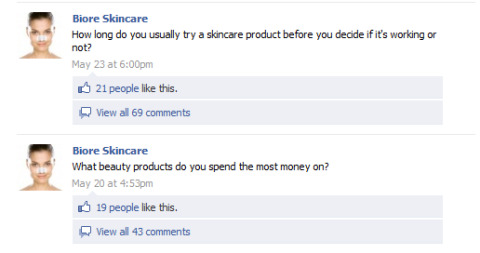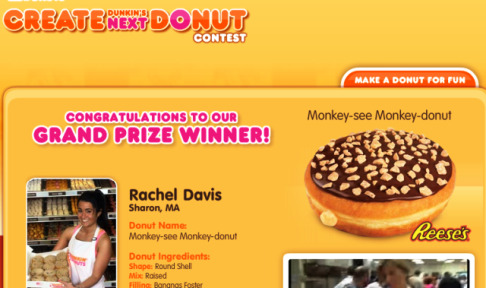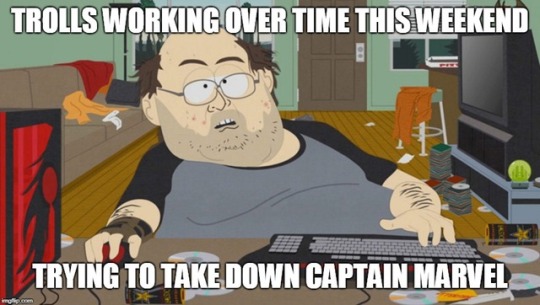Photo
Public health campaign

National mental health awareness day
10 notes
·
View notes
Text
PUBLIC HEALTH CAMPAIGNS
According to statista an online platform that measures social media usage worldwide, there are over 2271 million people on Facebook, 326 million on Twitter, over 1000 million Instagram users and 287 million people on Snapchat. As a result, public health campaigns have increasingly used social media platforms to spread awareness and seek to influence their Behaviour.
Mental health has become a popular topic for social media campaigns, as more and more people want to get involved in tackling the stigma associated with talking about mental illness.
Media portrayals and reporting of mental illness are incredibly powerful in educating and influencing the public. When done well social media can be a tremendous tool in raising awareness, challenging attitudes and helping to dispel myths.
An example of an organization campaign public health campaign is #ruokay. The campaign promotes checking up on your friends and family often, and following four simple steps to help those who may be in need (ask, listen, encourage action and check in).
R u okay day falls in the week of national suicide prevention week, which is ideal as it promotes the week with a simple, easy hashtag and brings everyone together in a sense. People have taken the trend of using # ruokay, and this hashtag is used on a regular basis.
Whilst this is a positive step towards tackling the stigma of mental health, it does present an issue of people who are unequipped in knowing what to say or how to respond when someone approaches them and says they are actually not okay. I think allot of people like to let their friends and family know that they are there for them however are shocked and not prepared when someone says ‘no I’m not okay’ and almost expect them to answer ‘yes I’m okay’.
To show people that r u okay day needs to occur every day, the organization has now released videos showing signs that people may not be okay, and how one small action can mean one large thing. The videos aim to encourage people to ask if one is okay if their actions, even so small begin to change.

The videos, information on the webpage, and shares across social media platforms have all helped to raise awareness on big issues that may be hidden behind little actions, encouraging people to ask one another “are you okay” if their Behaviour is changing. From what began as one social media campaign, evolved into a social media phenomenon.
https://www.ruok.org.au
0 notes
Text
CHINESE MEDIA CONTROL
“You can’t control the internet” many would say, however Chinese officials have worked out actually, you can. A generation of Chinese have grown up with an internet use that is distinctively different from the rest of the web and western society. Over the past decade Chinese government has blocked sites such as Google, Facebook, Twitter and Instagram in addition to thousands of other popular webpages.
Media control and censorship is effective in China not only because the regime make it extremely difficult to access sensitive or “controversial” information, but because over time they have created an environment where citizens do not demand such information to begin with. This is the attitude that the majority of young millenniums hold as they have been accustomed to media regulation for most of their life.
Instead of using social networking apps such as Facebook and Instagram many young people instead use apps such as Baidu and the social media site WeChat. These alternative social media platforms by all means are still heavily controlled by Chinese authorities, censoring all posts, images and comments made by individuals even shutting down accounts that may be confrontational.
What authorities are looking for are key words and expressions that are trending popping up in social media. Anything that gains significant attention or may spark protest could see a user being reported to law authorities. A current example of this is the nickname “Winnie the Pooh”. A single message featuring this name will be censored and can’t not posted or shared in discussions. This stems from a mockery comment made about the Chinese leader comparing his appearance to Winnie the Pooh.

https://www.bbc.com/news/blogs-china-blog-40627855
This meme comparing the Chinese leader and US president Barack Obama to Winnie the Pooh and Tigger has been censored in China. Images of the cute cartoon character have now been blocked on all social media sites because of the ridicule made by online bloggers. The blocking of Winnie the Pooh may seem strange to western society, I know in Australia such comparisons are considered harmless, however make no mistake Chinese censors will not tolerate mockery especially at their Leaders expense.
0 notes
Text
VIDEO GAMES AND ONLINE COMMUNITIES
I imagine most parents with children who play video games have pestered their children to stop playing games and to go play outside with real people.From the parent’s perspective their child seems totally isolated sitting alone fixated on a screen for hours. Increasingly children and teens are spending more of their time inside playing video games or online with their friends then actually seeing them face to face doing something in person.

I understand as I have younger siblings that playing video games with friends is a positive experience and does in fact allow them to communicate with friends even though they may not physically be with them. I do agree that playing video games with friends can be a positive experience especially for people that have difficulties interacting with others in person.
I think that whilst communicating with friends via video games may be a little unconventional, it is helpful in building social connections and confidence that is necessary for face to face interactions. In saying this I do think steps should be taken to ensure children’s online safety as playing an online video game is not a source of social support.
There has been a long standing argument on whether violent video games contribute to aggressive Behaviour in real life? After mass shootings in the US often violent video games have been scrutinized. There was a public uproar following the Columbine shootings after two high school seniors Eric Harris and Dylan Klebold murdered 12 students and a teacher. They both enjoyed playing video games such as Doomand Quake, popular games at the time. Both the killers had wide-ranging cultural interests, including “dark” music, computers and drama.
Whilst online gaming is a relatively new medium compared to traditional media there probably hasn’t been enough significant research to determine playing violent video games has the potential to increase an individual’s aggression and thoughts. Video games and online communities must be regulated to ensure the media people are consuming are aligning with the codes of conduct and are kept in check.
0 notes
Photo
VIDEO GAMES - COLLUMBINE SCHOOL SHOOTING


1K notes
·
View notes
Text
CROWDSOURCING
Have you ever heard of the word crowdsourcing? If you haven’t it’s possible that you are familiar with the act of crowdsourcing. Crowdsourcing is the act of engaging a ‘crowd’ or group for a common goal, often to unite, problem solve and gather information. It is what allows people to speak up and have a voice in a time of crisis.
Companies can benefit from crowdsourcing as they are able to engage with consumers and have two ways conversations. As the evolving relationship between consumers and brands bring everyone closer, crowdsourcing is a powerful way to socially activate and get consumers talking. For businesses crowdsourcing can be used for consumer feedback and when asking open ended questions. For example, asking consumers why or when they need your product. You have not only connected with your online audience but also gained a valuable learning insight.

Starbucks also executed this idea of using consumer feedback with “My Starbucks idea.” The site allows online users to submit suggestions and opinions to then be voted on by Starbucks consumers, with the most popular suggestions being reviewed. Starbucks then took this process a step further and launched an “Ideas In Action” blog that gave updates to users on the progress of their suggestions changes.

Another big brand example of crowdsourcing with social media is Dunkin Donuts. In 2010 Donkin Donuts launched the “Create Dunkins Next Donut” contest. The contest was largely successful with over 130,000 submissions and 174,000 votes.

Overall crowdsourcing is useful for companies to gain an insight into consumer feedback and to improve consumer relationships. Crowd sourcing allows for consumers to take part in decision making processes and is an effective learning tool to support business developments.
0 notes
Text
TROLLING
If you consider yourself to be pretty active on social media or other types of online communities, you may have come across the term “internet trolls" or “being trolled,” which is when someone comments or responds to something you post, usually in a reactive way designed to create a strong, emotional reaction.
Although many people use the term in contexts where a sense of humor is appreciated, the truth is that online trollingcan get pretty nasty and isn't always a laughing matter.
The internet troll is a modern take on the mythical troll. They hide behind their computer screens, and actively go out of their way to cause trouble on the internet. You can find trolls all over the internet, in YouTube comments, Instagram, dating sites, blog comments and anywhere else where people are able to post their opinions. Monitoring comments and controlling trolls can be difficult when there is a large online platform.
Regardless of where you will find online trolls they tend to disrupt communities in a very similar and often predictable way. In my experience and opinion here is a list of some of the types of trolls out there.
THE INSULT TROLL:
The insult troll is someone who loves to give online hate and often they don’t really have a reason to hate or insult something/someone. These types of trolls will pick on everyone and anyone to get a negative reactive response from them, simply because they can. This type of trolling severe enough can also be considered cyberbullying.
THE DEBATE TROLL:
The debate troll loves a good argument, they will go against all popular opinions and facts just to challenge its message. They believe that they are right and everyone else is wrong and they will stop at nothing to prove it. You may have seen them leaving long scripted paragraphs in community comment sections, continuing to comment until other users give up.
THE GRAMMAR TROLL:
The grammar troll, they are always the people to tell other users that they have misspelled certain words or have made a grammar mistake. This form of trolling is pretty much never welcomed or appreciated in any discussion.
THE ALL CAPS TROLL:
The all caps troll is the guy who has nothing really useful or of value to contribute to the discussion using online curse words with his caps lock button left on. These types of trolls are often just bored kids with no substantial argument looking for something to do.
THE SPAMMER TROLL:
This is the troll who couldn’t care less about the topic of the discussion or your post only posting to benefit themselves. The spammer troll wants you to check out his or her page, buy from the link or use the voucher code they have provided. These trolls also include users from social media platforms commenting “follow me” on every post.
0 notes
Text
SLACKTIVISM
So slacktivism? You might be wondering what exactly it is and how it makes a difference in the world.
The United Nations has defined slacktivism as when people “support a cause by performing simple measures” but “are not truly engaged or devoted to making a change.” Slacktivism typically means taking to social media and involving things like retweeting words of hope after a national disaster or liking a charity’s Facebook page. Since it is low-cost, low-risk and noncommittal, slacktivism makes engagement easy for the public.
The prime example of slacktivism used to benefit a cause is the ALS ice bucket campaign. People joined in because they like the feeling of being a part of something. Everyone’s timeline was full of people sharing their videos on social media and challenging their friends to do the same, which resulted in tons of social media interaction and millions of dollars for ALS research.
The number of people dumping ice cold buckets of water on their heads may have outdone the actual donations but since the movement went viral the campaign was still extremely successful. The campaign made the most out of slacktivism whilst encouraging actual action, either dumping ice cold water or your head or donating to the cause.
While slacktivism is inevitable it is not the way to go about create real change. It’s so easy to like a Facebook page, retweet an article to bring awareness or change your profile picture, however never actually engage.
Back in 2014 most people hadn’t heard of Boko Haram – a radical Nigerian Islamic Militia who violently opposed western culture and education. However, within a matter of days they become global news after the abduction of 270 school girls in the town of Chibok. Furious Nigerians took to social media to create the social media campaign which went viral around the world with more than three million retweets.
The campaign gained the attention of many celebrities and world leaders including America’s First Lady, Michelle Obama. Michelle took to social media and posted a photo of herself holding up a placard with the hashtag #BringBackOurGirls. Despite the campaigns global attention and publicity one year later the taken girls had still not been found. This is the sad reality of online campaigns and “slacktivism”, if you want to have an impact a click is not enough.
There is power behind social media and its ability to connect users over important causes, however activists and campaigners must realise that creating/supporting a hashtag or video is not enough to change the cause. After a campaign has gone viral and stops trending there needs to be an action plan to continue engaging supporters. With the ever increasing use of social media there is always a new trending topic. In the case of the #BringBackOurGirls campaign it was launched in the spring of 2014 and was forgotten about a few months later by other viral movements.
It is important to highlight that even though social media can be a great tool campaign for change, no change can be made entirely by staying online. The internet and online platforms are not sufficient enough, regardless of their ability to create awareness and worldwide movement. Without demonstrations, protest marches, government intervention, and intervention of other media, liking a social media campaign is not enough to support a cause.
References:
The Guardian. 2015. Stolen daughters: what happened after #BringBackOurGirls?. [ONLINE] Available at: https://www.theguardian.com/tv-and-radio/2018/oct/22/bring-back-our-girls-documentary-stolen-daughters-kidnapped-boko-haram. [Accessed 9 May 2019].
The Daily Beast. 2017. Hilary Matfess. [ONLINE] Available at: https://www.thedailybeast.com/three-years-later-a-look-at-the-bringbackourgirls-catch-22. [Accessed 9 May 2019].
WE Organisation. 2015. What happened to #BringBackOurGirls? Was it clicktivism or slacktivism?. [ONLINE] Available at: https://www.we.org/we-schools/columns/global-voices/happened-bringbackourgirls-clicktivism-slacktivism/
The Conversation. 2017. Joel Penney. [ONLINE] Available at: https://theconversation.com/more-than-slacktivism-we-dismiss-the-power-of-politics-online-at-our-peril-79500. [Accessed 9 May 2019].
The Guardian. 2015. Stolen daughters: what happened after #BringBackOurGirls?. [ONLINE] Available at: https://www.theguardian.com/tv-and-radio/2018/oct/22/bring-back-our-girls-documentary-stolen-daughters-kidnapped-boko-haram. [Accessed 9 May 2019].
0 notes
Text
IS TUMBLR A BLOG? OR SOCIAL NETWORKING SITE?
I know when I initially think social media and marketing, Tumblr doesn’t typically come to mind. However, after learning about the site and the functionality it has got me thinking is Tumblr a social networking site? Blog? Or can it be both?
The social network and multimedia blogging platform currently has more than 345 million users. Tumblr can be used to share life updates, trending GIFS, pop culture memes and news content. You can write blog posts and share photos/ videos and respond to threads and social content. Tumblr allows individuals to not only create their own blog but to be a part of an online social networking community.
Unlike other social networking platforms like Facebook and Instagram there are few limits on what you can share/view.
There are several ways in which marketers can use Tumblr to advertise to audiences. Sponsored posts is one of the many ways marketers can use the platform to target users. These posts look like regular Tumblr posts so users potentially re blog them. They are targetable by gender, location and user interests. As a brand this means you can reach out to target audiences posting content with related hashtags reaching the right types of communities.
While Tumblr may externally look like a blogging site, I believe it is definitely much more. Like other social media platforms like Facebook and Instagram, Tumblr allows its users to post multimedia content ranging from video, text and images.
Tumblr is a combination of multiple social networking sites, primarily Instagram and Twitter in the way it allows users to create their own page and upload or repost photos and videos.
References:
- Lifewire. (2019). The Complete Beginner’s Guide to Using Tumblr. [online] Available at: https://www.lifewire.com/how-to-use-tumblr-4049305 [Accessed 1 Apr. 2019].
- Business Trends and Insights. (2019). The Great Tumblr Debate: Blogging Platform Or Social Network?. [online] Available at: https://www.americanexpress.com/en-us/business/trends-and-insights/articles/the-great-tumblr-debate-blogging-platform-or-social-network/[Accessed 1 Apr. 2019].
- Themuse.com. (2019). Tumblr: The Social Media Platform You Should Be Using. [online] Available at: https://www.themuse.com/advice/tumblr-the-social-media-platform-you-should-be-using [Accessed 01 Apr. 2019].
0 notes
Text
POLITICAL ENGAGEMENT AND SOCIAL MEDIA
The use of social media and political engagement has grown rapidly over the last decade. People are increasingly turning to social media sites to receive news and information. This has allowed social networking sites to emerge as a key venue for political debates, campaigns and discussions.
The use of social media in politics has dramatically changed the way political campaigns are run and how we interact with government officials. The prevalence of social media in politics has made elected representatives and candidates more accountable and accessible to voters and online communities.
Social networking sites including Facebook, Instagram, Twitter and You tube allow politicians to speak directly voters and to broadcast their message across to a large audience. Unlike the traditional method of reaching voters through paid advertising, social media platforms allow politicians to advertise and communicate with the public without having to spend countless money on a paid campaign.
It has become increasingly common for politicians to launch political campaigns on You tube instead of having to pay for television or radio time. Political campaigns can also be shared and reposted by other like- minded social media users which further broadcast the political campaign to a wider audience at no cost.
American President Donald Trump, heavily used Twitter in his 2016 presidential campaign. “I like it because I can get also my point of view out there” Trump said. In 2008, President Obama also used social media to gain younger voters engaging them through social media platforms Facebook and Twitter. Social media has opened up a new way of communicating with online audiences and voters, aiding political campaigns and engagement.
References:
- Enterprise, F., Agencies, F., Business, F., Management, F., Marketing, F., Care, F., Advocacy, F., Intelligence, F., Features, V., Difference, T., Sprout, A., Sprout, W., Blog, S., Thinking, B., Center, R., Updates, P., Tools, F., Studies, C., Publication, R., Social, S., Measured, S., Trial, S., Social, S., Measured, S., Trial, S. and Mazouri, H. (2019). Social media guide for political campaigns. [online] Sprout Social. Available at: https://sproutsocial.com/insights/social-media-for-political-campaigns/ [Accessed 1 Apr. 2019].
- Taylor & Francis. (2019). Election Campaigning on Social Media: Politicians, Audiences, and the Mediation of Political Communication on Facebook and Twitter. [online] Available at: https://www.tandfonline.com/doi/full/10.1080/10584609.2017.1334728 [Accessed 01 Apr. 2019].
- Workfront.com. (2019). The Three Golden Rules Of Social Media In Political Campaigns | Workfront. [online] Available at: https://www.workfront.com/blog/the-three-golden-rules-of-social-media-in-political-campaigns [Accessed 1 Apr. 2019].
- ThoughtCo. (2019). Social Media in Politics - Twitter and Facebook as Campaigns Tools. [online] Available at: https://www.thoughtco.com/how-social-media-has-changed-politics-3367534 [Accessed 01 Apr. 2019].
0 notes



